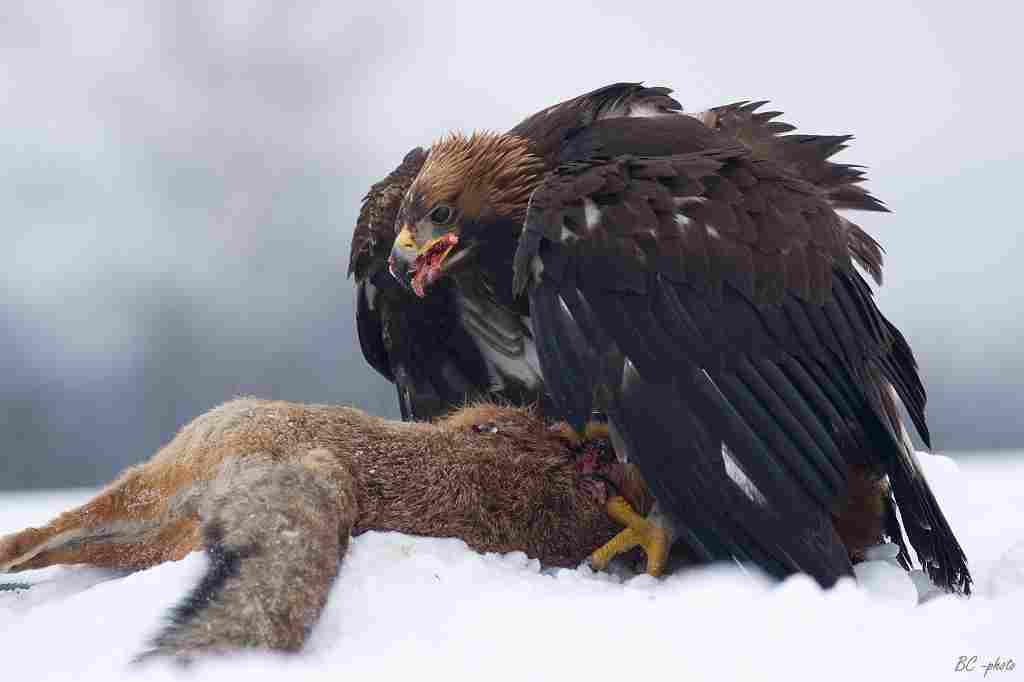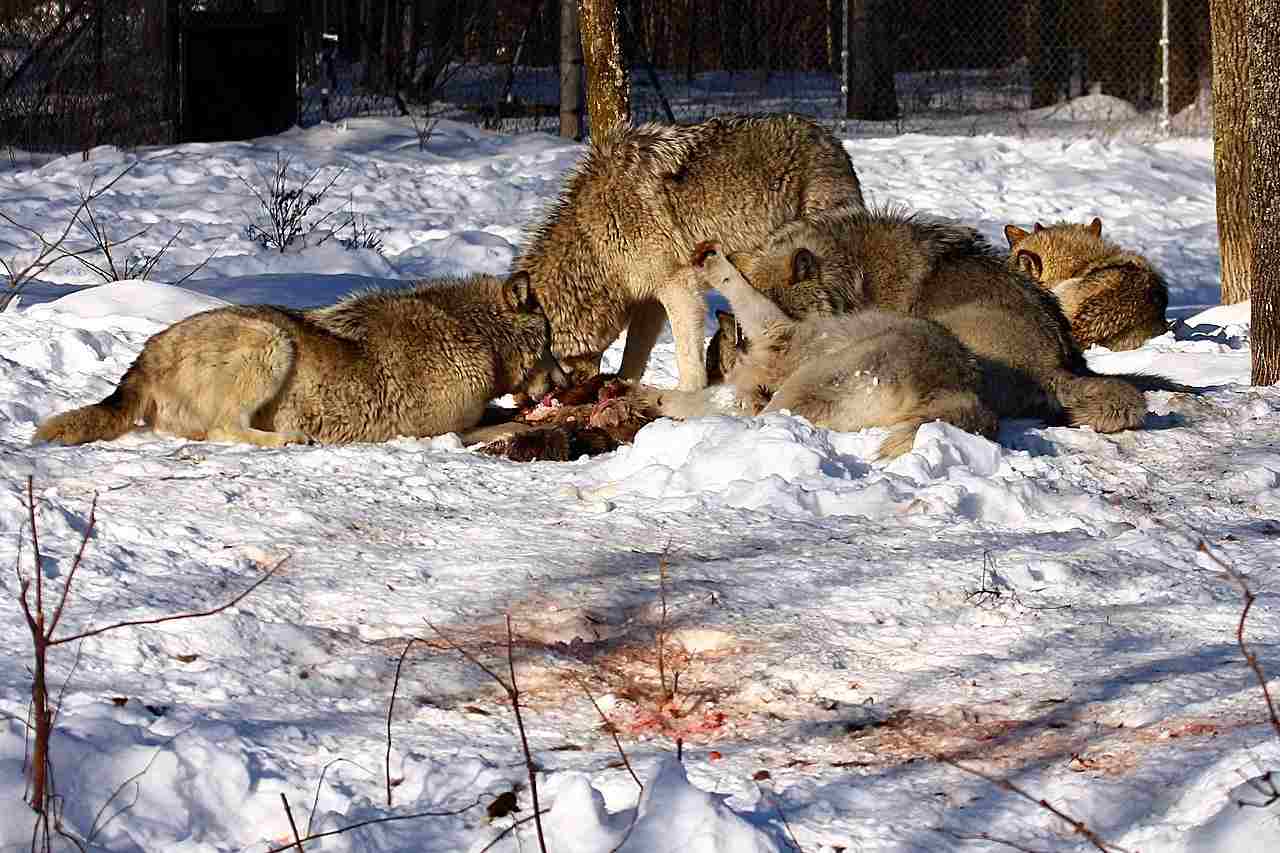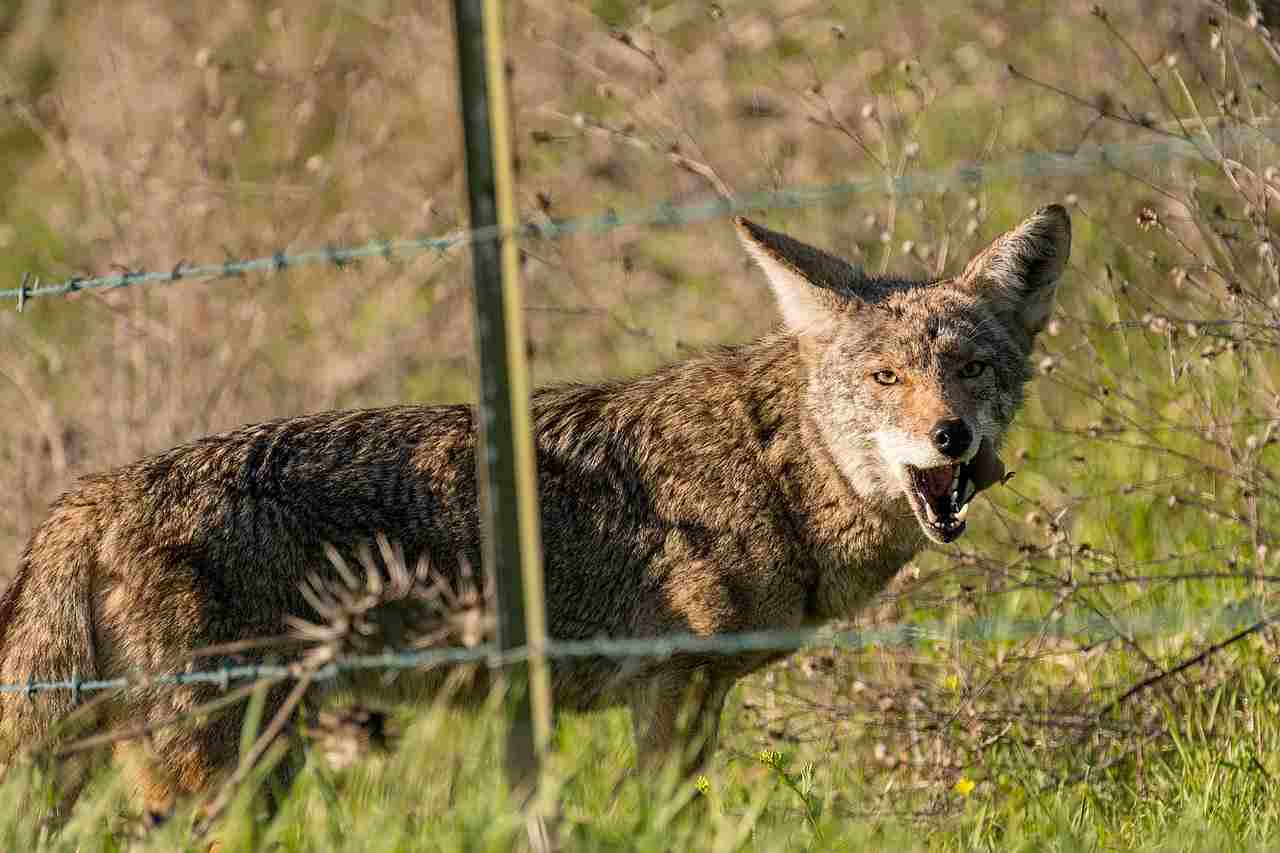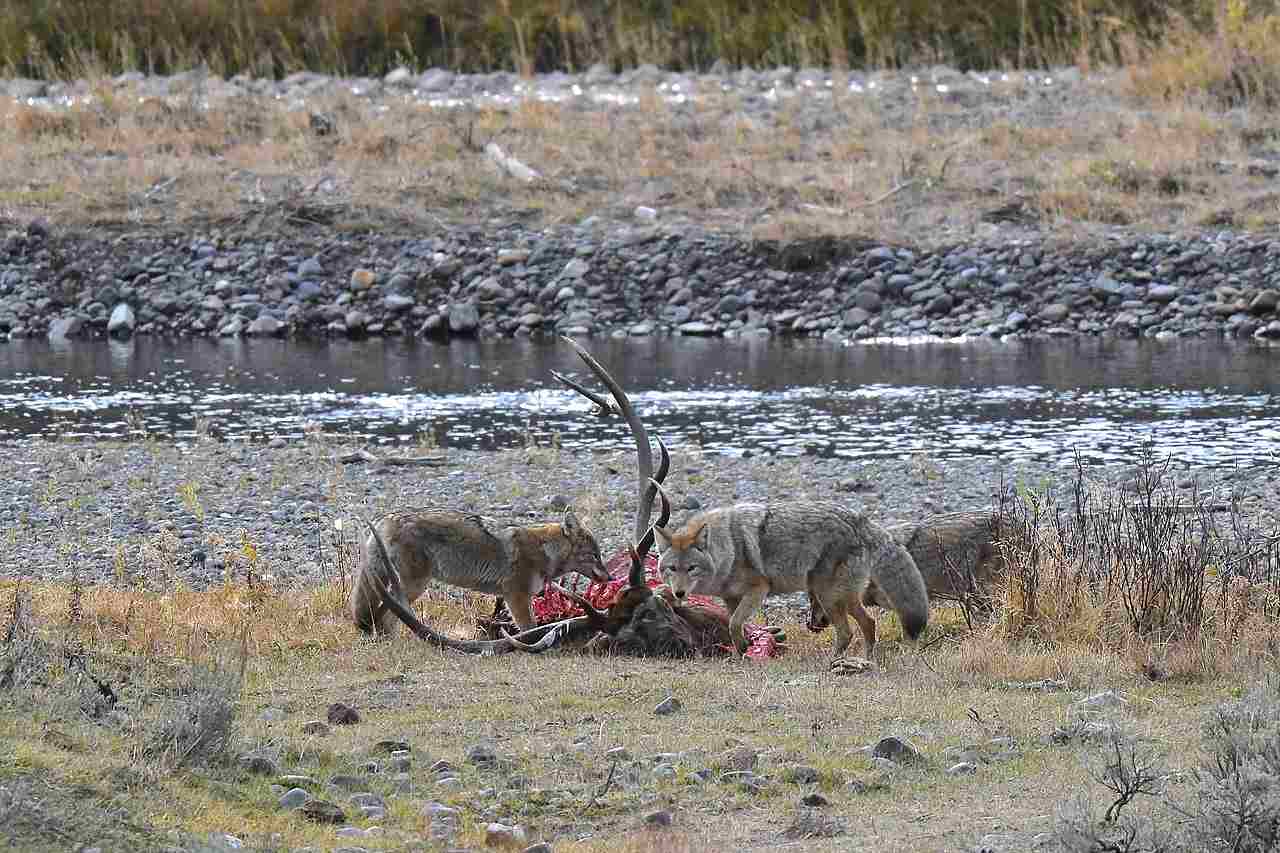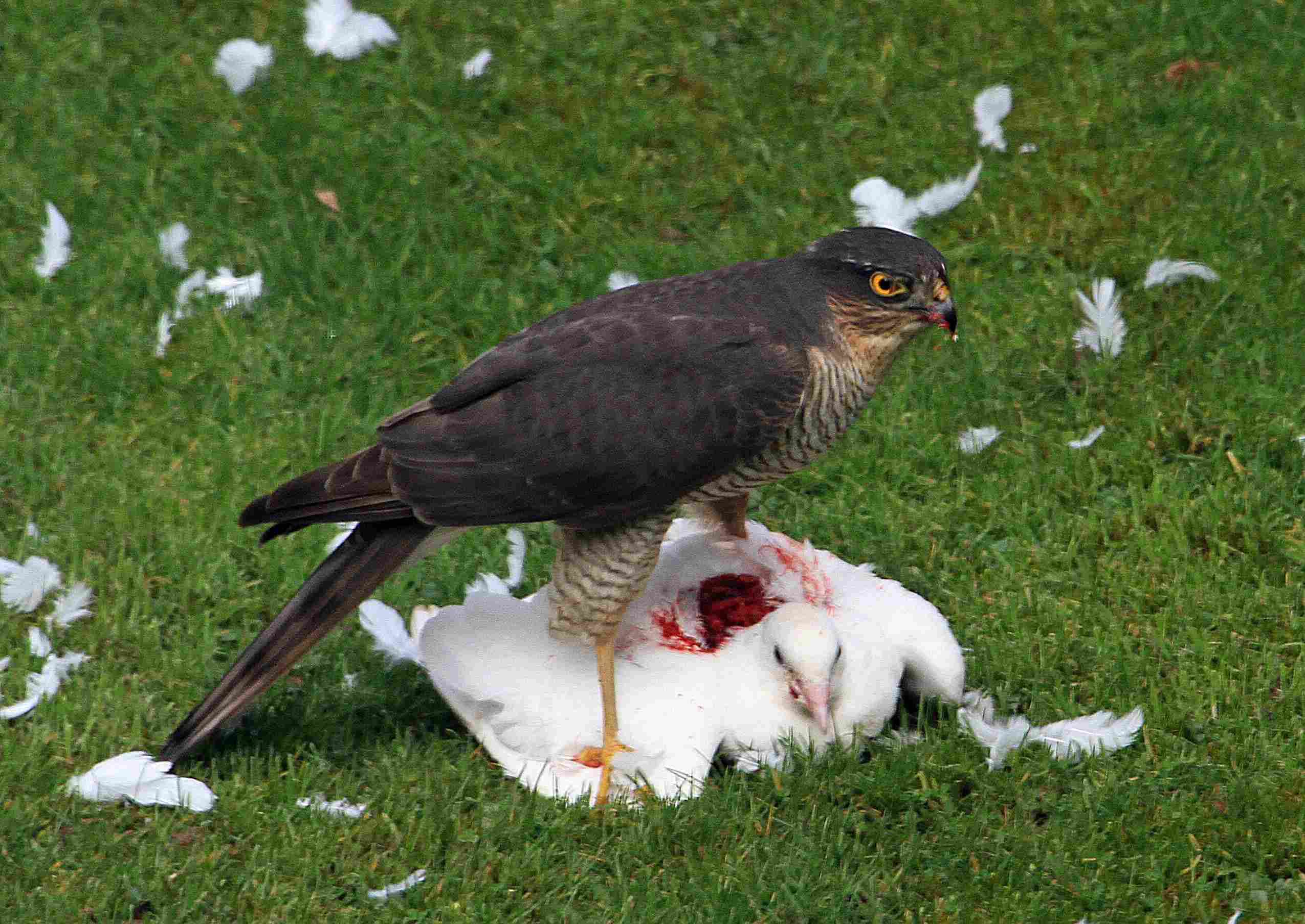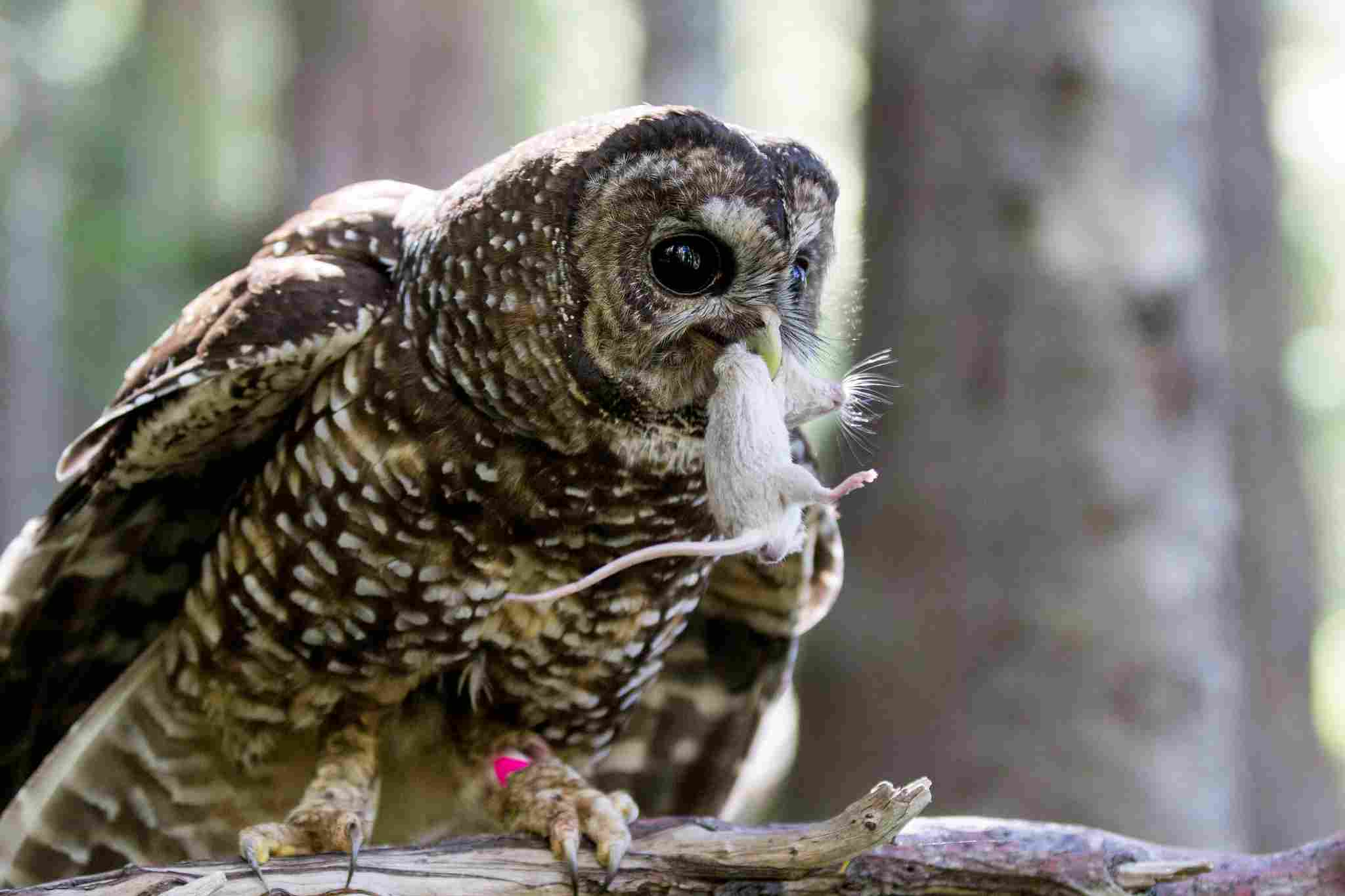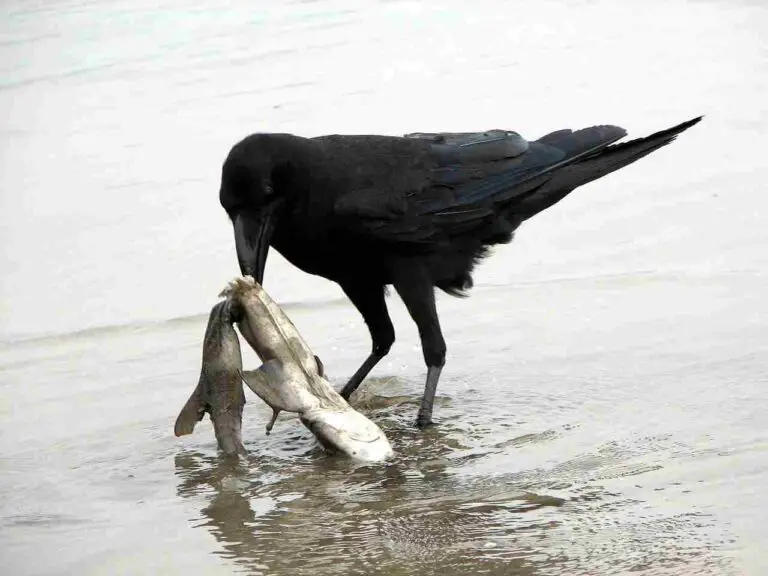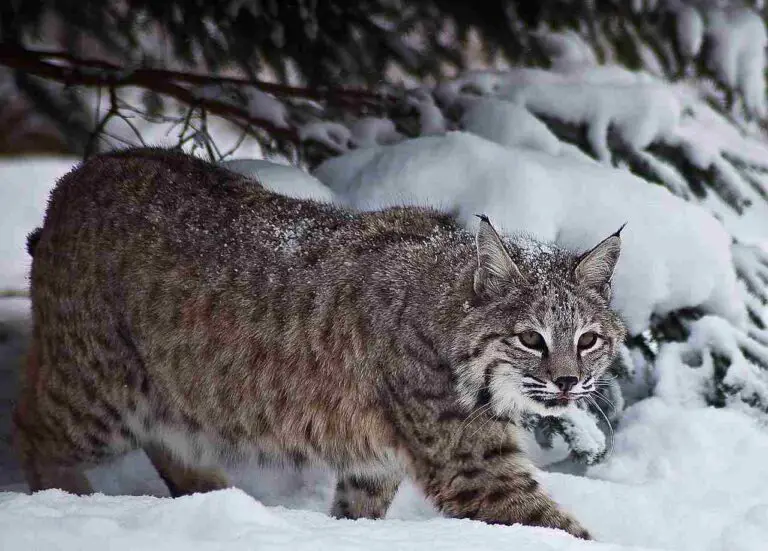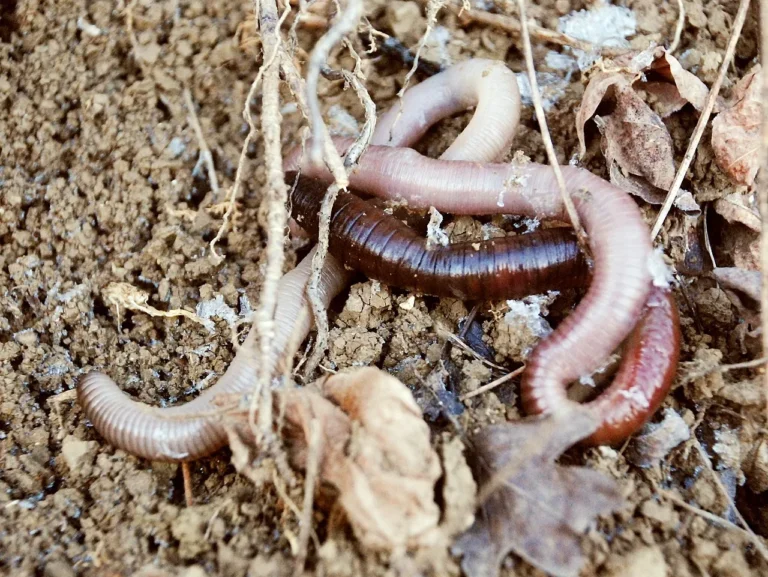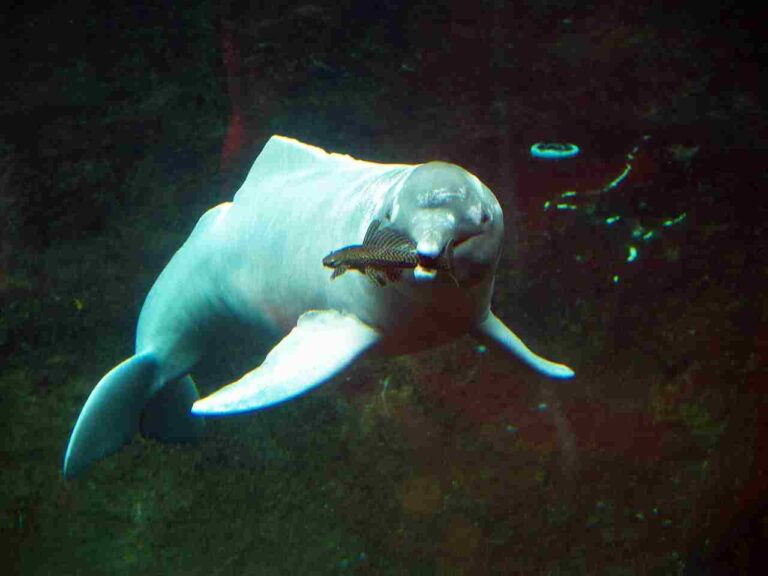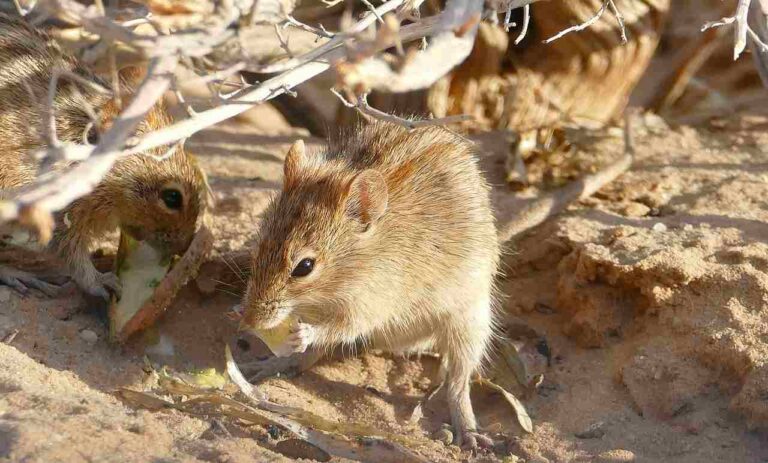What Eats Lizards? 11+ Predators of Lizards Discussed
Animals that eat lizards include; hawks, owls, crows, foxes, dingoes, coyotes, wolves, raccoons, opossums, mongoose, cats, snakes, and alligators.
They are discussed in this article.
What Animals Eat Lizards?
1). Owls
Owls are fascinating creatures that are known for their exceptional hunting skills and ability to adapt to various environments. These birds of prey are also formidable predators of lizards, making them an important part of the lizard’s natural food chain.
One of the key characteristics of owls that make them successful lizard hunters is their exceptional night vision. Owls have large, forward-facing eyes that are adapted to low light conditions, allowing them to spot lizards even in the darkness. This gives them a distinct advantage over their prey, as many lizard species are active during the night.
Owls often inhabit diverse habitats, ranging from forests to deserts, and can be found on almost every continent. This wide distribution means that they encounter a variety of lizard species as potential prey. Some common lizard species that owls feed on include geckos, anoles, and skinks.
When hunting for lizards, owls employ a combination of stealth and surprise. They silently glide through the air, using their specialized feathers to reduce noise and sneak up on their unsuspecting prey. Once they spot a lizard, owls swoop down with incredible speed and accuracy, using their sharp talons to capture their meal.
While lizards may not be the main prey for all owl species, they are certainly an important part of their diet. Owls have a diverse diet that includes small mammals, birds, and insects, but lizards make up a significant portion of their food source in many regions.
2). Crows
Crows are highly intelligent and adaptable birds that are known for their scavenging behavior. While they are not typically considered specialized lizard predators, crows have been observed feeding on lizards in certain situations.
Crows often inhabit a wide range of environments, including urban areas, forests, and agricultural fields. They are opportunistic feeders and will consume a variety of food sources, including insects, small mammals, fruits, and even carrion. In some cases, this opportunistic behavior extends to lizards.
In their search for food, crows may come across lizards in their natural habitats. Lizards can be found in various locations, such as on the ground, in trees, or on rocks. Crows have keen eyesight and can spot lizards from a distance, especially if they are moving or basking in the sun.
While lizards may not be the main prey for crows, they can still be targeted as a potential food source. Crows are known to scavenge on dead animals, and if they come across a deceased lizard, they may take advantage of the opportunity. Additionally, if a crow encounters a weakened or injured lizard, it may seize the chance to capture and consume it.
Crows have a diverse diet, and their ability to adapt to different food sources allows them to survive in various environments. While lizards may not be a staple in their diet, they can still be considered as occasional prey for crows.
3). Foxes
Foxes are opportunistic predators that are known to eat a variety of prey, including lizards. While lizards may not be their main prey, foxes will take advantage of the opportunity to consume them when available.
Foxes often inhabit diverse habitats, ranging from forests to grasslands to urban areas. They have adapted to various environments and are skilled hunters. Their keen senses, including excellent hearing and sharp eyesight, enable them to locate potential prey, including lizards.
In their search for food, foxes may come across lizards in their natural habitats. Lizards can be found in different locations, such as in vegetation, on the ground, or on rocks. Foxes are agile and quick, allowing them to chase and capture lizards that are on the move.
While lizards may not be the primary target for foxes, they are still considered as part of their diet. Foxes have a diverse diet that includes small mammals, birds, insects, fruits, and carrion. Lizards provide a source of protein and nutrients for foxes, especially during times when other prey may be scarce.
Foxes are known for their hunting strategies, which involve stalking, pouncing, and biting their prey. When hunting lizards, foxes may use their stealth and agility to approach them without being detected. Once within striking distance, they will quickly seize the lizard with their sharp teeth and consume it.
It’s important to note that the specific species of fox may influence their predation on lizards. For example, the red fox is a widespread species known to consume lizards, while other fox species may have different dietary preferences.
4). Dingoes
Dingoes, an animal that eats lizards, often inhabits a variety of habitats, including forests, grasslands, and deserts. These wild dogs are native to Australia and are known for their hunting prowess. While lizards may not be their main prey, dingoes will opportunistically consume them when they come across them.
In their search for food, dingoes have adapted to their surroundings and developed efficient hunting techniques. Their keen senses, including acute hearing and sharp eyesight, enable them to detect potential prey, including lizards, from a distance. Dingoes are agile and swift runners, allowing them to chase down lizards that are on the move.
Lizards can be found in various locations, such as in vegetation, on the ground, or on rocks. Dingoes have the ability to navigate these different terrains and locate lizards in their natural habitats. While lizards may not be the primary target for dingoes, they provide a valuable source of protein and nutrients.
Dingoes have a diverse diet that includes small mammals, birds, insects, and carrion. Lizards are an important part of their diet, especially in environments where other prey may be scarce. Dingoes have sharp teeth and powerful jaws, which they use to capture and consume lizards. They may employ stalking and pouncing techniques to surprise their prey and ensure a successful hunt.
It’s important to note that dingoes are apex predators in their ecosystems and play a crucial role in maintaining the balance of the food chain. By controlling the population of lizards and other prey species, dingoes help regulate the ecosystem’s biodiversity.
5). Coyotes
Coyotes, an animal that eats lizards, are highly adaptable and can be found in a variety of habitats, including forests, grasslands, and deserts. These intelligent canines have a diverse diet, and while lizards may not be their main prey, they are certainly on the menu.
Coyotes have excellent hunting skills and are known for their opportunistic feeding behavior. They have keen senses, including a strong sense of smell and sharp eyesight, which help them locate lizards in their environment. Whether the lizards are hiding in vegetation, basking on rocks, or scurrying on the ground, coyotes have the ability to track them down.
While coyotes primarily feed on small mammals like rabbits and rodents, they also consume reptiles, including lizards. Lizards provide a valuable source of protein and nutrients for coyotes, especially in areas where other prey may be scarce. Coyotes are skilled hunters and can use their speed and agility to catch lizards on the move.
Coyotes are known for their adaptability and ability to thrive in various ecosystems. They play an important role in the food chain by controlling the population of lizards and other prey species.
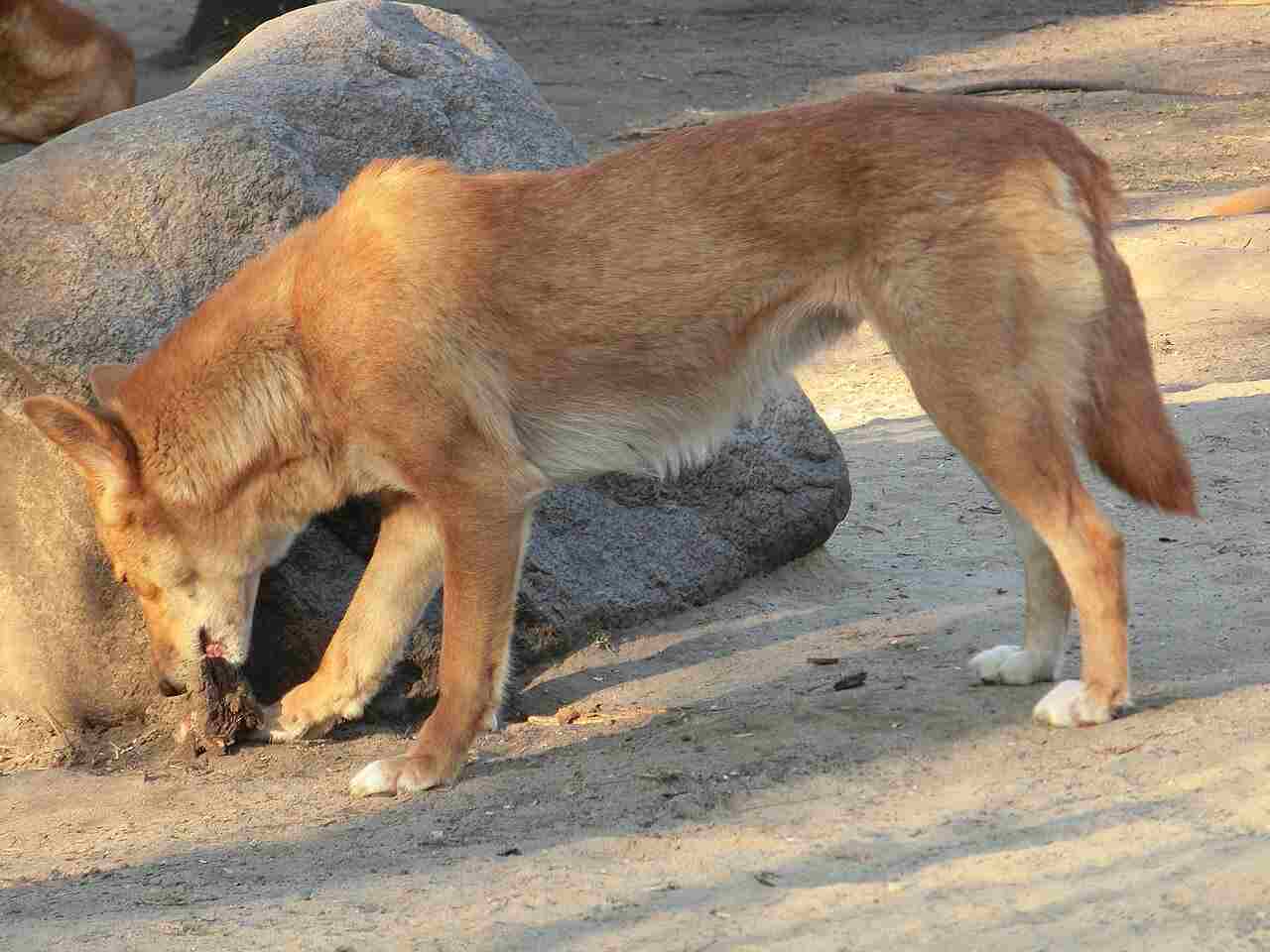
6). Wolves
Wolves, an animal that eats lizards, are fascinating creatures that inhabit various ecosystems around the world. These majestic predators have a diverse diet, and while lizards may not be their main prey, they are still a part of their food source.
Wolves are highly adaptable and can be found in a range of habitats, including forests, tundras, and grasslands. They are skilled hunters and have developed a keen sense of smell and hearing, which helps them locate potential prey, including lizards. Whether the lizards are hiding in the underbrush or basking on rocks, wolves have the ability to track them down.
While wolves primarily feed on large ungulates like deer and elk, they also consume smaller animals, including reptiles like lizards. Lizards provide a valuable source of protein and nutrients for wolves, especially in areas where other prey may be scarce. Wolves are known for their cooperative hunting behavior, where they work together in packs to bring down larger prey. However, when the opportunity arises, they will not hesitate to catch and consume lizards on their own.
Wolves play a crucial role in maintaining the balance of ecosystems. By controlling the population of lizards and other prey species, they help prevent overpopulation and maintain the health of the ecosystem. Additionally, the presence of wolves can influence the behavior and distribution of lizards, creating a dynamic relationship between predator and prey.
7). Raccoons
Raccoons, an animal that eats lizards, are known for their adaptability and resourcefulness. These intelligent creatures can be found in a variety of habitats, including forests, urban areas, and wetlands. While raccoons have a diverse diet, lizards are among the prey they target.
Raccoons are skilled climbers and have nimble paws that allow them to navigate trees and other structures with ease. This gives them an advantage when hunting lizards, as they can reach them in their hiding spots, such as tree branches or crevices in rocks. Raccoons are also excellent swimmers, which enables them to catch lizards near bodies of water.
While raccoons are omnivorous and consume a wide range of food, including fruits, nuts, and insects, lizards are a valuable source of protein for them. Raccoons have sharp teeth and strong jaws that enable them to capture and consume lizards efficiently. They are opportunistic hunters and will take advantage of any available food source, including lizards that cross their path.
Raccoons are primarily nocturnal, which means they are most active during the night. This gives them an advantage when hunting lizards, as many lizard species are also active during this time. Raccoons have keen senses, particularly their sense of touch, which helps them locate and capture lizards in the dark.
The presence of raccoons in an ecosystem can have an impact on the population dynamics of lizards. As predators, raccoons help regulate the lizard population by preying on them. This can prevent overpopulation and maintain a healthy balance within the ecosystem.
8). Opossums
Opossums, an animal that eats lizards, are fascinating creatures that can be found in various habitats across North and South America. These marsupials have unique characteristics that make them well-suited for hunting and consuming lizards.
Opossums are opportunistic omnivores, meaning they have a diverse diet that includes both plant matter and animal prey. While they primarily feed on fruits, nuts, and insects, lizards are also a significant part of their diet. Opossums have sharp teeth and strong jaws that allow them to capture and consume lizards efficiently.
These nocturnal creatures are most active during the night, which coincides with the peak activity of many lizard species. Opossums have excellent night vision and a keen sense of smell, which helps them locate and track down lizards in the dark. Their ability to climb trees and navigate through dense vegetation also gives them an advantage in hunting lizards.
Opossums are known for their adaptability and can thrive in a variety of environments, including forests, grasslands, and urban areas. They are skilled climbers and can easily access the hiding spots of lizards, such as tree branches or crevices in rocks. Opossums are also excellent swimmers, allowing them to catch lizards near bodies of water.
The presence of opossums in an ecosystem can have a significant impact on the population dynamics of lizards. As predators, opossums help regulate the lizard population by preying on them. This predation can prevent overpopulation and maintain a healthy balance within the ecosystem.
9). Mongoose
The mongoose is an agile and cunning animal that is known for its ability to hunt and consume lizards. With its sleek body and sharp teeth, the mongoose is well-equipped to catch and devour its prey.
Found in various regions around the world, including Africa, Asia, and the Caribbean, the mongoose often inhabits grasslands, forests, and even urban areas. Its adaptability allows it to thrive in different environments, making it a formidable predator for lizards.
The mongoose has a keen sense of smell and excellent eyesight, which helps it locate and track down lizards. It uses its speed and agility to chase after its prey, often pouncing on them with lightning-fast reflexes. Once it catches a lizard, the mongoose uses its sharp teeth to deliver a swift and fatal bite.
Lizards are a primary food source for mongooses, and they make up a significant portion of their diet. The mongoose’s main prey includes various species of lizards, such as geckos, skinks, and even small snakes. Its ability to find and capture lizards efficiently has made it a successful predator in many ecosystems.
One interesting behavior of mongooses is their ability to handle venomous lizards. Some lizards, like the venomous Gila Monster, pose a threat to other predators. However, mongooses have developed a resistance to venom and can consume these lizards without being affected by their toxins.
10). Cats
Cats, including all species from small domestic cats to larger ones like bobcats, leopards, lions, tigers, and lynxes, are known to be skilled predators that hunt and consume lizards. These feline creatures have a natural instinct for hunting and are equipped with sharp claws and teeth, making them formidable predators in their respective habitats.
Cats are found in various environments, from urban areas to grasslands and forests, where they often encounter lizards as part of their prey. With their keen senses, cats can easily detect the presence of lizards and use their agility and stealth to approach and capture them.
Lizards are a common food source for cats, and they make up a significant portion of their diet. Cats are opportunistic hunters and will take advantage of any opportunity to catch a lizard that crosses their path. Their hunting techniques vary depending on the species and size of the lizard, but they often rely on their speed and quick reflexes to catch their prey.
While cats primarily prey on smaller lizards, larger species like lions and tigers have been known to take down larger reptiles such as monitor lizards. Cats are skilled hunters and have adapted to their environments, making them successful predators of lizards in various ecosystems.
11). Snakes
Snakes, although fellow reptiles, are natural predators of lizards. These slithering creatures are known for their stealth and ability to capture their prey with precision. Snakes can be found in various habitats, from forests to deserts, where they often encounter lizards as part of their diet.
Snakes have adapted to their environments and developed specialized hunting techniques to catch lizards. They rely on their excellent sense of smell and heat-sensing pits to detect the presence of lizards nearby. Once they locate their prey, snakes use their agility and lightning-fast strikes to capture the unsuspecting lizards.
Lizards are a common food source for snakes, and they make up a significant portion of their diet. Snakes have a wide range of prey, but lizards are particularly appealing due to their size and abundance in many ecosystems. Depending on the species and size of the snake, they may consume small lizards or even larger ones like monitor lizards.
Snakes are highly efficient predators, and their bodies are perfectly adapted for hunting and consuming lizards. Their flexible jaws allow them to swallow prey whole, even if it is larger than their own head. Snakes also have sharp teeth that help them grip and immobilize their prey during the feeding process.
12). Alligators
Alligators are formidable predators that are known to consume a variety of prey, including lizards. These large reptiles are commonly found in freshwater habitats such as swamps, marshes, and rivers, where they often encounter lizards as part of their diet.
Alligators are well-adapted to their environments and have developed specialized hunting techniques to capture lizards. With their powerful jaws and sharp teeth, alligators are capable of delivering a swift and deadly bite to their prey. They lie in wait, partially submerged in the water, patiently observing their surroundings for any signs of movement.
When an alligator spots a lizard, it quickly lunges forward, using its strong tail to propel itself through the water. With lightning-fast speed, it clamps its jaws around the lizard, securing a firm grip. Alligators have a remarkable ability to exert tremendous force with their jaws, making it nearly impossible for the lizard to escape.
Lizards serve as a significant food source for alligators, especially in areas where they are abundant. Alligators have a diverse diet, but lizards are particularly appealing due to their size and availability. Depending on the size of the alligator, it may consume smaller lizards or even larger ones like monitor lizards.
Alligators are apex predators in their ecosystems, meaning they have few natural predators themselves. Their size, strength, and powerful jaws make them formidable hunters. However, they are not invincible, and larger alligators may occasionally prey upon smaller ones, including young alligators.
13). Hawks
Hawks are arguably the most well-known predator of lizards. These birds of prey are known for their keen eyesight, powerful talons, and impressive hunting skills. Hawks often inhabit a variety of habitats, including forests, grasslands, and deserts, where they can find an abundance of lizards to feed on.
With their exceptional eyesight, hawks are able to spot lizards from great distances. They patiently perch on tree branches or soar high in the sky, scanning the ground below for any signs of movement. Once a hawk spots a lizard, it swiftly swoops down, using its sharp talons to capture its prey.
Lizards are a main prey for hawks due to their size and availability. Hawks are opportunistic hunters and will take advantage of any opportunity to catch a lizard. They have adapted to be able to catch lizards both on the ground and in the air. Hawks have strong, curved beaks that allow them to tear apart the flesh of their prey and consume it.
Hawks play an important role in controlling lizard populations and maintaining the balance of ecosystems. By preying on lizards, they help to regulate their numbers and prevent overpopulation. This, in turn, helps to ensure the survival of other species that rely on lizards as a food source.
In addition to lizards, hawks also feed on a variety of other small animals, including rodents, birds, and insects. They are skilled hunters and have the ability to adapt their hunting techniques to different prey. Hawks are known for their agility and speed, making them formidable predators in the animal kingdom.
What Eats Lizards in the Desert?
Animal that eat lizards in the desert include; kit fox, jackal, hyena, red-tailed hawk, monitor lizard, Gila monster, bobcat, and Saharan horned viper. These predators range across different geographic locations.
1). Kit Fox
The kit fox is an animal that preys on lizards in the desert. With its keen sense of hearing and excellent vision, the kit fox is a formidable predator in its arid habitat. Its main prey consists of small lizards, which it hunts with precision and agility.
One of the key adaptations that make the kit fox an efficient lizard hunter is its slender body and long legs. These physical characteristics allow it to navigate through the desert terrain swiftly, chasing down its prey with remarkable speed. The kit fox’s sharp teeth and strong jaws enable it to deliver a swift and lethal bite to immobilize its target.
In addition to lizards, the kit fox also feeds on other small desert-dwelling creatures such as rodents, insects, and birds. However, lizards make up a significant portion of its diet due to their abundance in the desert ecosystem. The kit fox’s ability to adapt its hunting strategies to different lizard species further enhances its success as a predator.
The kit fox’s hunting techniques vary depending on the lizard species it encounters. For instance, when hunting swift lizards that rely on speed to escape, the kit fox will employ a stealthy approach, using its keen senses to track and ambush its prey. On the other hand, when targeting slower-moving lizards, the kit fox may engage in a more direct pursuit, relying on its speed and agility to catch its meal.
2). African Golden Wolf
The African Golden Wolf is another predator that preys on lizards in the desert. With its keen sense of smell and exceptional speed, the African Golden Wolf is well-equipped to hunt down its main prey in the arid landscape.
One of the key adaptations that make the African Golden Wolf an efficient lizard hunter is its slender body and long legs. These physical characteristics enable it to swiftly navigate through the desert terrain, giving it an advantage in chasing down its prey. The African Golden Wolf’s sharp teeth and powerful jaws allow it to deliver a swift and lethal bite, immobilizing its target with precision.
While lizards are a significant part of the African Golden Wolf’s diet, it also feeds on other small desert-dwelling creatures such as rodents, insects, and birds. However, lizards play a crucial role in sustaining the wolf’s energy needs due to their abundance in the desert ecosystem. The African Golden Wolf’s ability to adapt its hunting strategies to different lizard species further enhances its success as a predator.
When hunting lizards, the African Golden Wolf employs various techniques depending on the species it encounters. For instance, when targeting swift lizards that rely on speed to escape, the wolf will utilize its exceptional speed and agility to chase down its prey. On the other hand, when pursuing slower-moving lizards, the African Golden Wolf may employ a stealthy approach, relying on its keen senses to track and ambush its meal.
3). Jackal
The jackal is another predator that preys on lizards in the desert. With its keen senses and adaptability, the jackal is well-suited to hunt down its main prey in the arid landscape.
One of the key adaptations that make the jackal an efficient lizard hunter is its sharp teeth and strong jaws. These physical characteristics allow it to deliver a swift and lethal bite, immobilizing its target with precision. The jackal’s slender body and long legs enable it to navigate through the desert terrain with agility, giving it an advantage in chasing down lizards.
While lizards are a significant part of the jackal’s diet, it also feeds on other small desert-dwelling creatures such as rodents, insects, and birds. However, lizards play a crucial role in sustaining the jackal’s energy needs due to their abundance in the desert ecosystem. The jackal’s ability to adapt its hunting strategies to different lizard species further enhances its success as a predator.
When hunting lizards, the jackal employs various techniques depending on the species it encounters. For instance, when targeting swift lizards that rely on speed to escape, the jackal will utilize its exceptional speed and agility to chase down its prey. On the other hand, when pursuing slower-moving lizards, the jackal may employ a stealthy approach, relying on its keen senses to track and ambush its meal.
4). Hyena
Hyenas are another predator that preys on lizards in the desert. These scavengers are known for their opportunistic feeding habits and ability to adapt to various environments. While hyenas are primarily associated with scavenging, they are also skilled hunters and can take down small prey like lizards.
One of the main reasons hyenas target lizards as their prey is their abundance in the desert ecosystem. Lizards provide a readily available food source for hyenas, especially during times when larger prey may be scarce. With their powerful jaws and sharp teeth, hyenas can deliver a lethal bite to immobilize their lizard prey.
5). Red Tailed Hawk
Red-tailed hawks are known for their keen eyesight, powerful talons, and impressive hunting skills. With their ability to soar high in the sky, red-tailed hawks have a distinct advantage when it comes to spotting and capturing their lizard prey.
One of the main reasons red-tailed hawks target lizards as their main prey in the desert is their abundance and accessibility. Lizards are often found basking in the sun or scurrying across the desert floor, making them an easy target for these skilled hunters. The red-tailed hawk’s sharp talons and strong grip allow them to snatch lizards from the ground or even pluck them from tree branches.
Red-tailed hawks have a varied diet, but lizards make up a significant portion of their food source in the desert. These birds are known to feed on a wide range of lizard species, including desert spiny lizards, collared lizards, and whiptails. Their hunting techniques involve swooping down from above, using their sharp beak to deliver a precise and lethal strike to immobilize their prey.
The presence of red-tailed hawks in the desert ecosystem helps to control the population of lizards, ensuring a balanced and healthy ecosystem. By preying on lizards, these birds help to regulate their numbers and prevent overpopulation, which could otherwise have detrimental effects on the desert habitat.
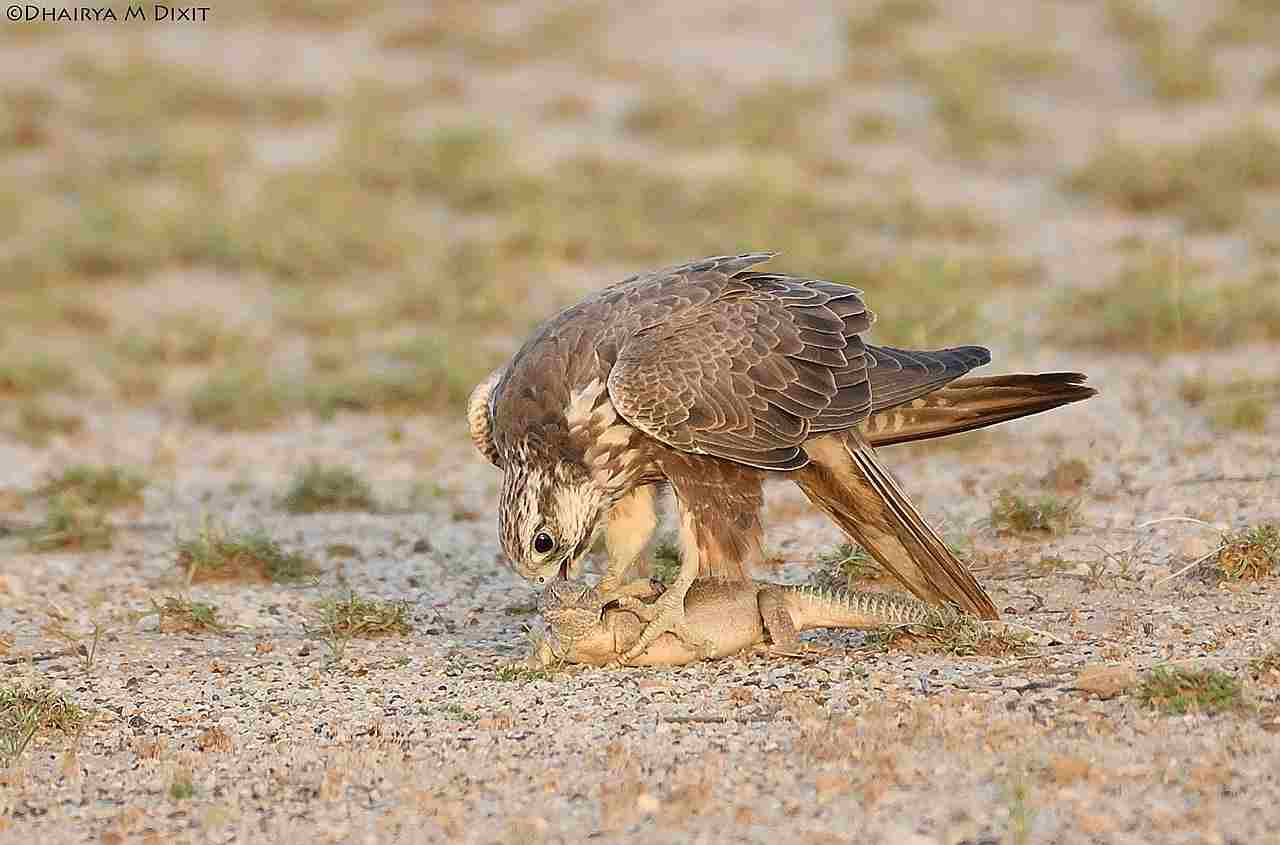
6). Monitor Lizards
Monitor lizards are formidable predators that play a crucial role in the desert ecosystem. These large reptiles are known for their impressive size, powerful jaws, and sharp claws, which make them highly efficient hunters of smaller lizards.
In the desert, monitor lizards are opportunistic feeders, preying on a variety of lizard species that inhabit the arid landscape. Their main prey includes desert spiny lizards, collared lizards, and whiptails, which are abundant in the desert environment. Monitor lizards have a keen sense of smell and excellent vision, allowing them to locate and track their lizard prey with precision.
One of the key advantages monitor lizards have as predators is their ability to climb trees and rocks. This gives them access to lizards that seek refuge in elevated areas, making it difficult for other predators to reach them. With their strong jaws and sharp teeth, monitor lizards can quickly immobilize their prey, ensuring a successful hunt.
Monitor lizards are also known for their patience and stealth. They can remain motionless for extended periods, waiting for the perfect opportunity to strike. When the time is right, they use their lightning-fast reflexes to ambush their unsuspecting prey, delivering a swift and lethal bite.
By preying on lizards, monitor lizards help to regulate their population in the desert ecosystem. This is essential for maintaining a balanced food chain and preventing overpopulation, which could have detrimental effects on the lizard species and their habitat.
In addition to lizards, monitor lizards are known to consume a wide range of other prey, including small mammals, birds, eggs, and even carrion. Their adaptability and versatility as predators make them a vital component of the desert ecosystem, contributing to its overall health and stability.
7). Gila Monster
The Gila Monster is a reptile that is known for its unique appearance and venomous bite. Found in the desert regions of the southwestern United States and northern Mexico, the Gila Monster is one of the few venomous lizards in the world. This makes it a formidable predator in its habitat.
The main prey of the Gila Monster includes small mammals, birds, eggs, and other reptiles. However, its diet primarily consists of other lizards. With its strong jaws and sharp teeth, the Gila Monster is able to capture and consume a variety of lizard species that inhabit the desert. Its venomous bite immobilizes its prey, making it easier for the Gila Monster to feed.
One of the key adaptations of the Gila Monster is its ability to store fat in its tail. This allows it to survive for long periods without food, making it a patient and opportunistic predator. When the opportunity arises, the Gila Monster will ambush its lizard prey, using its powerful bite to inject venom and incapacitate them.
The Gila Monster’s venom is not lethal to humans, but it can cause intense pain and discomfort. This venom is primarily used for self-defense rather than hunting. When threatened, the Gila Monster will bite and hold on to its attacker, delivering a dose of venom that serves as a deterrent.
Despite its venomous nature, the Gila Monster plays an important role in the desert ecosystem. By preying on lizards, it helps to control their population and maintain a balanced food chain.
8). Bobcat
The bobcat is a skilled predator that can be found in various habitats, including the desert. This medium-sized wildcat is known for its adaptability and hunting prowess, making it a formidable predator for many small animals, including lizards.
One of the main prey of the bobcat in the desert is the lizard. With its keen senses and agility, the bobcat is able to stalk and capture lizards with precision. Its sharp retractable claws and powerful jaws allow it to swiftly immobilize and dispatch its prey. The bobcat’s stealthy nature and ability to blend into its surroundings make it a highly effective hunter in the desert ecosystem.
The bobcat’s diet consists of a variety of lizard species, including desert spiny lizards, collared lizards, and whiptails. These lizards are an important food source for the bobcat, providing it with the necessary nutrients and energy to survive in the harsh desert environment.
In addition to lizards, the bobcat also preys on other small animals such as rabbits, mice, and birds. Its opportunistic nature allows it to adapt its diet based on the availability of prey in its habitat. This flexibility ensures that the bobcat can sustain itself even during periods of scarcity.
The presence of bobcats in the desert ecosystem helps to regulate the population of lizards and other small animals. By preying on lizards, the bobcat plays a crucial role in maintaining a balanced food chain and preventing overpopulation. This, in turn, contributes to the overall health and stability of the desert ecosystem.
9). Saharan Horned Viper
The Saharan Horned Viper is an animal that eats lizards in the desert. This venomous snake is well-adapted to its arid environment and has developed unique hunting strategies to capture its prey.
One of the main prey of the Saharan Horned Viper is lizards. With its excellent camouflage and ambush tactics, the viper patiently waits for unsuspecting lizards to pass by. When a lizard comes within striking distance, the viper strikes with lightning speed, injecting venom into its prey. The venom quickly immobilizes the lizard, allowing the viper to consume it at its leisure.
The Saharan Horned Viper primarily feeds on small to medium-sized lizards, such as the desert spiny lizard and the dune gecko. These lizards are abundant in the desert and provide a vital source of nutrition for the viper. By preying on lizards, the Saharan Horned Viper helps to control their population and maintain a balanced ecosystem in the desert.
In addition to lizards, the Saharan Horned Viper also consumes other small desert-dwelling animals, including rodents and small birds. Its diet varies depending on the availability of prey in its habitat, ensuring its survival even during times of scarcity.
The Saharan Horned Viper’s venomous bite is not only used for hunting but also for self-defense. When threatened, the viper will coil up and hiss, displaying its distinctive horn-like scales to intimidate predators. If the warning signs are ignored, the viper will strike with deadly accuracy, delivering a potent venom that can incapacitate or kill its attacker.
What Eats Lizards in the Rainforest?
1). Harpy Eagle
The Harpy Eagle is a magnificent bird of prey that can be found in the rainforests of Central and South America. This impressive raptor is known for its large size and powerful build, making it a formidable predator in the rainforest ecosystem.
As an apex predator, the Harpy Eagle plays a crucial role in regulating the population of lizards in the rainforest. With its keen eyesight and sharp talons, it is well-equipped to hunt and capture its prey. Lizards, including various species of geckos and anoles, are among the main prey of the Harpy Eagle.
The Harpy Eagle’s hunting strategy involves perching on high tree branches, patiently scanning the forest floor for any signs of movement. Once it spots a potential target, it swoops down with incredible speed and precision, using its powerful talons to snatch the lizard from its hiding place.
The diet of the Harpy Eagle is not limited to lizards alone. It also preys on a variety of other animals, including monkeys, sloths, and small mammals. However, lizards form a significant part of its diet, especially in areas where they are abundant.
The presence of the Harpy Eagle in the rainforest is essential for maintaining a balanced ecosystem. By controlling the population of lizards, it helps to prevent overgrazing and competition for resources among these reptiles. Additionally, the Harpy Eagle’s hunting activities contribute to the natural selection process, favoring lizards with better camouflage and defensive strategies.
2). Mamba
The Mamba is a highly venomous snake that can be found in the rainforests of Africa. Known for its speed and deadly bite, the Mamba is a formidable predator that preys on a variety of animals, including lizards.
With its sleek and agile body, the Mamba is able to swiftly navigate through the dense vegetation of the rainforest in search of its prey. Lizards, such as geckos and skinks, are among the main targets of the Mamba. These reptiles provide a nutritious food source for the snake, helping it to sustain its energy and survive in its habitat.
The Mamba’s hunting strategy involves using its excellent eyesight and sense of smell to locate lizards. Once it spots a potential target, the snake strikes with lightning speed, injecting its venom into the lizard’s body. The venom of the Mamba is highly potent and can quickly immobilize its prey, allowing the snake to consume it without much resistance.
Lizards play an important role in the diet of the Mamba, providing essential nutrients and contributing to its overall survival. As a predator, the Mamba helps to regulate the population of lizards in the rainforest, preventing overpopulation and maintaining a balanced ecosystem.
In addition to lizards, the Mamba also preys on other small animals, including birds, rodents, and amphibians. Its diverse diet ensures that it can adapt to the availability of prey in its environment.
3). Monkey
Monkeys are highly adaptable and intelligent creatures that inhabit various ecosystems, including the rainforest. These agile primates have a diverse diet, and lizards are among their prey. Monkeys have developed specialized hunting techniques and physical adaptations that allow them to capture and consume lizards effectively.
One of the main species of monkey that preys on lizards in the rainforest is the capuchin monkey. Capuchins have a varied diet that includes fruits, insects, small mammals, and reptiles. Lizards provide an important source of protein and nutrients for these primates, especially during times when other food sources may be scarce.
Capuchin monkeys have sharp eyesight and excellent hand-eye coordination, which enables them to spot and capture lizards with precision. They use their nimble fingers to grasp and immobilize their prey, ensuring a successful hunt. Once caught, the monkeys will consume the lizard whole or tear it into smaller pieces for easier consumption.
Monkeys also play a crucial role in the rainforest ecosystem by regulating the population of lizards. By preying on lizards, monkeys help to control their numbers and prevent overpopulation. This balance is essential for maintaining a healthy and sustainable ecosystem.
In addition to capuchin monkeys, other species of monkeys in the rainforest, such as howler monkeys and spider monkeys, may also consume lizards as part of their diet. Each species has its own hunting techniques and preferences, but lizards remain a valuable food source for many rainforest-dwelling monkeys.
4). Ocelot
Ocelots are fascinating creatures that inhabit the rainforest and are known for their agility and stealth. These medium-sized wild cats are skilled hunters and have a diverse diet that includes lizards. Ocelots are highly adaptable and can be found in various regions of the rainforest, from Central and South America to parts of the United States.
Lizards are one of the main prey items for ocelots in the rainforest. These cats have sharp claws and powerful jaws, which they use to capture and kill their prey. Ocelots are excellent climbers and can navigate through the dense vegetation of the rainforest with ease, allowing them to ambush lizards from above or pounce on them from the ground.
Ocelots have a keen sense of hearing and sight, which helps them locate and track their prey. They are patient hunters and will wait silently for the perfect moment to strike. Once they catch a lizard, ocelots will use their sharp teeth to deliver a swift and fatal bite.
Lizards provide an important source of nutrition for ocelots, as they are rich in protein and other essential nutrients. By preying on lizards, ocelots help to regulate their population and maintain a healthy balance in the rainforest ecosystem.
In addition to lizards, ocelots also feed on other small mammals, birds, and reptiles.
5). Jaguar
Jaguars are powerful predators that inhabit the rainforests of Central and South America. These magnificent big cats are known for their strength, agility, and stealth, making them formidable hunters in their natural habitat. While jaguars have a diverse diet that includes various animals, lizards are among their main prey.
With their muscular bodies and sharp retractable claws, jaguars are well-equipped to capture and overpower their prey. They have a keen sense of hearing and sight, allowing them to detect even the slightest movement of lizards in the dense rainforest vegetation. Jaguars are skilled climbers and swimmers, enabling them to pursue lizards both on land and in water.
When hunting lizards, jaguars rely on their stealth and patience. They stalk their prey silently, using the element of surprise to their advantage. Once they get close enough, jaguars unleash their powerful jaws and deliver a swift and fatal bite to immobilize the lizard. Their strong teeth and jaws ensure a quick and efficient kill.
Lizards provide an important source of nutrition for jaguars. They are rich in protein and other essential nutrients, helping to sustain the jaguar’s energy levels and overall health. By preying on lizards, jaguars play a crucial role in regulating the population of these reptiles and maintaining a balanced ecosystem in the rainforest.
In addition to lizards, jaguars also feed on a variety of other prey, including small mammals, birds, fish, and larger animals like deer and tapirs. Their adaptability and hunting prowess make them one of the top predators in the rainforest, playing a vital role in the intricate web of life in this diverse ecosystem.
6). Civet
Civets are fascinating creatures that can be found in rainforests around the world. These small, carnivorous mammals are known for their unique appearance and nocturnal habits. While civets have a diverse diet, they are also known to prey on lizards in the rainforest.
Civets are well-suited for hunting lizards. They have a keen sense of smell and excellent night vision, allowing them to locate and track their prey in the dense rainforest vegetation. Civets are skilled climbers and can navigate the treetops with ease, giving them an advantage in capturing lizards that inhabit the canopy.
When hunting lizards, civets rely on their stealth and agility. They move silently through the trees, using their long tails for balance and their sharp claws for gripping branches. Once they spot a lizard, civets pounce with lightning speed, using their sharp teeth to deliver a swift and fatal bite. Their small size and nimble movements make them efficient hunters in the rainforest.
Lizards provide an important source of food for civets. They are rich in nutrients and help to sustain the civet’s energy levels and overall health. By preying on lizards, civets contribute to the natural balance of the rainforest ecosystem.
7). King Genet
King genets are small carnivorous mammals found in rainforests in Africa. These elusive creatures are known for their slender bodies and long tails, which help them navigate through the dense vegetation of the rainforest. While king genets have a varied diet, they are opportunistic predators and will readily prey on lizards when the opportunity arises.
In the rainforest, lizards serve as an important food source for king genets. These agile predators have adapted to the rainforest environment and have developed specialized hunting techniques to capture their prey. With their sharp claws and keen senses, king genets are able to stalk and ambush lizards with precision.
The main prey of king genets in the rainforest are small lizards that inhabit the forest floor and lower branches of trees. These lizards provide a nutritious meal for the genets, supplying them with essential proteins and nutrients. King genets are skilled climbers and can easily navigate the trees to reach their prey.
When hunting lizards, king genets rely on their agility and stealth. They move silently through the rainforest, using their long tails for balance and their sharp teeth to deliver a swift and fatal bite. Their slender bodies allow them to squeeze into tight spaces, making it easier for them to capture lizards hiding in crevices or under foliage.
The presence of king genets in the rainforest ecosystem helps to regulate the population of lizards. By preying on lizards, king genets contribute to the natural balance of the rainforest food chain.
What Eats Lizards in the Amazon Rainforest?
Animals that eat lizards in the Amazon Rainforest include harpy eagle, cougar, Amazonian pygmy owl, red howler monkey, armadillo.
1). Cougar
The cougar, also known as the puma or mountain lion, is one of the top predators in the Amazon rainforest and is known to prey on lizards. With its powerful build and sharp claws, the cougar is an agile hunter that can easily catch and kill lizards in the dense vegetation of the rainforest. Cougars are solitary animals and are known for their stealth and ambush tactics when hunting.
They have a keen sense of sight and hearing, allowing them to locate and stalk their prey effectively. Once they spot a lizard, cougars use their muscular bodies to pounce on their unsuspecting prey, delivering a swift and lethal bite. Cougars are opportunistic hunters and will consume lizards as part of their varied diet, which also includes other small mammals and birds.
2). Amazonian Pygmy Owl
The Amazonian Pygmy Owl is a small but mighty predator that preys on lizards in the Amazon rainforest. With its compact size and sharp talons, this owl is well-equipped to hunt and capture its prey. The Amazonian Pygmy Owl is known for its excellent camouflage, blending seamlessly into the dense foliage of the rainforest. This allows it to approach lizards undetected, increasing its chances of a successful hunt.
Using its keen eyesight and acute hearing, the Amazonian Pygmy Owl patiently waits for the perfect moment to strike. When the opportunity arises, it swoops down with precision and snatches up its unsuspecting prey. Lizards are a vital part of the owl’s diet, providing it with the necessary nutrients and energy to thrive in its habitat.
The Amazonian Pygmy Owl’s ability to hunt lizards showcases the intricate web of predator-prey relationships in the rainforest ecosystem. As an apex predator, it plays a crucial role in maintaining the balance of the ecosystem by controlling lizard populations. This, in turn, has a cascading effect on other species within the food chain.
3). Red Howler Monkey
The Red Howler Monkey is another animal in the Amazon rainforest that preys on lizards. With its strong limbs and agile movements, the Red Howler Monkey is able to navigate the dense vegetation and catch its prey with ease. These monkeys have sharp teeth and powerful jaws, allowing them to quickly dispatch lizards once caught.
The Red Howler Monkey’s diet consists of various fruits, leaves, and insects, but lizards are also an important part of their food source. They are known to actively hunt for lizards during their foraging expeditions in the rainforest canopy. Their keen eyesight and excellent climbing abilities give them an advantage in spotting and capturing lizards.
By consuming lizards, the Red Howler Monkey contributes to the delicate balance of the rainforest ecosystem. They help control lizard populations, preventing them from becoming too abundant and potentially disrupting the ecosystem. Additionally, the nutrients obtained from lizards provide the Red Howler Monkey with essential energy for their daily activities and survival.
4). Armadillo
The Armadillo is an animal that eats lizards in the Amazon rainforest. While they primarily feed on insects and other invertebrates, lizards are also part of their diet. Armadillos have a keen sense of smell, which helps them locate their prey in the dense vegetation of the rainforest. They use their sharp claws to dig into the ground and uncover insects, but they can also catch lizards with their quick reflexes. Armadillos are known for their armored shell, which provides protection against predators.
This unique adaptation allows them to venture into areas where lizards may be hiding without fear of being attacked. By consuming lizards, armadillos play a role in maintaining the balance of the rainforest ecosystem. They help control lizard populations and ensure that they do not become too abundant. Additionally, lizards provide a source of nutrients for armadillos, contributing to their overall health and survival in the rainforest.
FAQs
1). What Eats Lizards in Florida?
In Florida, lizards have a variety of predators. One of the top predators is the puma, which preys on lizards as part of its diet. Another predator is the coyote, known for its opportunistic feeding habits. Birds of prey such as owls and hawks also feed on lizards, using their sharp talons and beaks to catch and consume them.
Snakes, including species like the eastern diamondback rattlesnake, are also known to eat lizards. Additionally, mammals like raccoons and possums have been observed hunting and consuming lizards in Florida.
2). Can a Rat Eat a Lizard?
Yes, a rat can eat a lizard, especially if it is opportunistic and the size of the rat is larger than the lizard. However, whether a rat can eat a lizard depends on the species of both the rat and the lizard, as well as their relative sizes.
Some rat species have been observed preying on lizards, taking advantage of the opportunity for a meal. It is important to note that not all rat species are capable of eating lizards, and the success of such predation may vary.
3). Are Lizards Predators?
Lizards are primarily predators, but their prey consists mainly of invertebrates. They have a wide range of hunting techniques and strategies to catch their prey, including ambush, pursuit, and stealth. Lizards have sharp teeth and strong jaws that allow them to capture and consume insects, spiders, worms, and other small invertebrates.
Some larger lizard species, such as monitor lizards, can even prey on small mammals, birds, and reptiles.
4). Do Dogs Eat Lizards?
Yes, dogs do eat lizards, especially feral and wild dogs like dingoes, as well as other canines like coyotes. These canines have a natural instinct to hunt and consume small prey, including lizards. Domesticated dogs may also show an interest in chasing and catching lizards, but their behavior can vary depending on their individual personality and training.
Some dogs may simply enjoy the chase and playfulness, while others may actually eat the lizards they catch. It’s important to note that not all dogs will eat lizards, and some may even be deterred by the taste or smell.
5). What Eats Lizards and Birds?
Lizards and birds are prey for a variety of predators in the animal kingdom. Raptors like owls and hawks are known to hunt and feed on both lizards and birds. These birds of prey have sharp talons and beaks that allow them to catch and consume their prey. Additionally, secondary consumers like possums and foxes also include lizards and birds in their diet.
6). Which Animals Eat Lizards in The Food Chain?
In the food chain, lizards serve as prey for both secondary and tertiary consumers. Secondary consumers, such as foxes and raccoons, include lizards in their diet. These animals play an important role in regulating lizard populations. Additionally, tertiary consumers like owls and snakes also feed on lizards.
Owls, with their exceptional hunting skills, are known to swoop down and snatch lizards from the ground. Snakes, on the other hand, use their stealth and venom to capture and consume lizards. The presence of these predators in the food chain highlights the interconnectedness and balance of ecosystems.
7). What are Lizards’ Prey?
Lizards’ prey primarily consists of invertebrates like insects, spiders, and worms. These small creatures make up a significant portion of a lizard’s diet, providing them with essential nutrients and energy. In addition to invertebrates, lizards also feed on small vertebrates such as frogs, small birds, and even other lizards.
This diverse diet allows lizards to adapt to different environments and find food sources that are available to them.
8). What Eats a Gecko?
Geckos, with their small size and agile nature, are preyed upon by various predatory animals. These predators include birds, snakes, and mammals. Birds such as owls and hawks are known to feed on geckos, using their sharp talons and beaks to catch and consume them. Snakes, especially those that are arboreal or live in tropical regions, also prey on geckos. They use their stealth and quick strikes to capture geckos as a source of food.
Mammals like foxes and cats are also known to eat geckos. These predators take advantage of their hunting skills and agility to catch geckos in their natural habitats. Additionally, some larger mammals like monkeys and ocelots have been observed preying on geckos in certain regions.
The ability of geckos to camouflage and blend into their surroundings helps them avoid predation to some extent. However, their small size and vulnerability make them attractive targets for a variety of predators.
9). Where Do Lizards Live?
Lizards are incredibly adaptable creatures, allowing them to thrive in a broad range of environments. They can be found in various habitats, including deserts, rainforests, grasslands, mountains, and even urban areas. This adaptability is one of the reasons why lizards have been able to survive and thrive for millions of years.
In deserts, lizards are well-suited to the extreme heat and arid conditions. They have developed specialized adaptations to conserve water and regulate their body temperature. In rainforests, lizards can be found climbing trees and blending into the lush vegetation. Grasslands provide an ideal habitat for lizards that rely on open spaces and abundant insects for food.
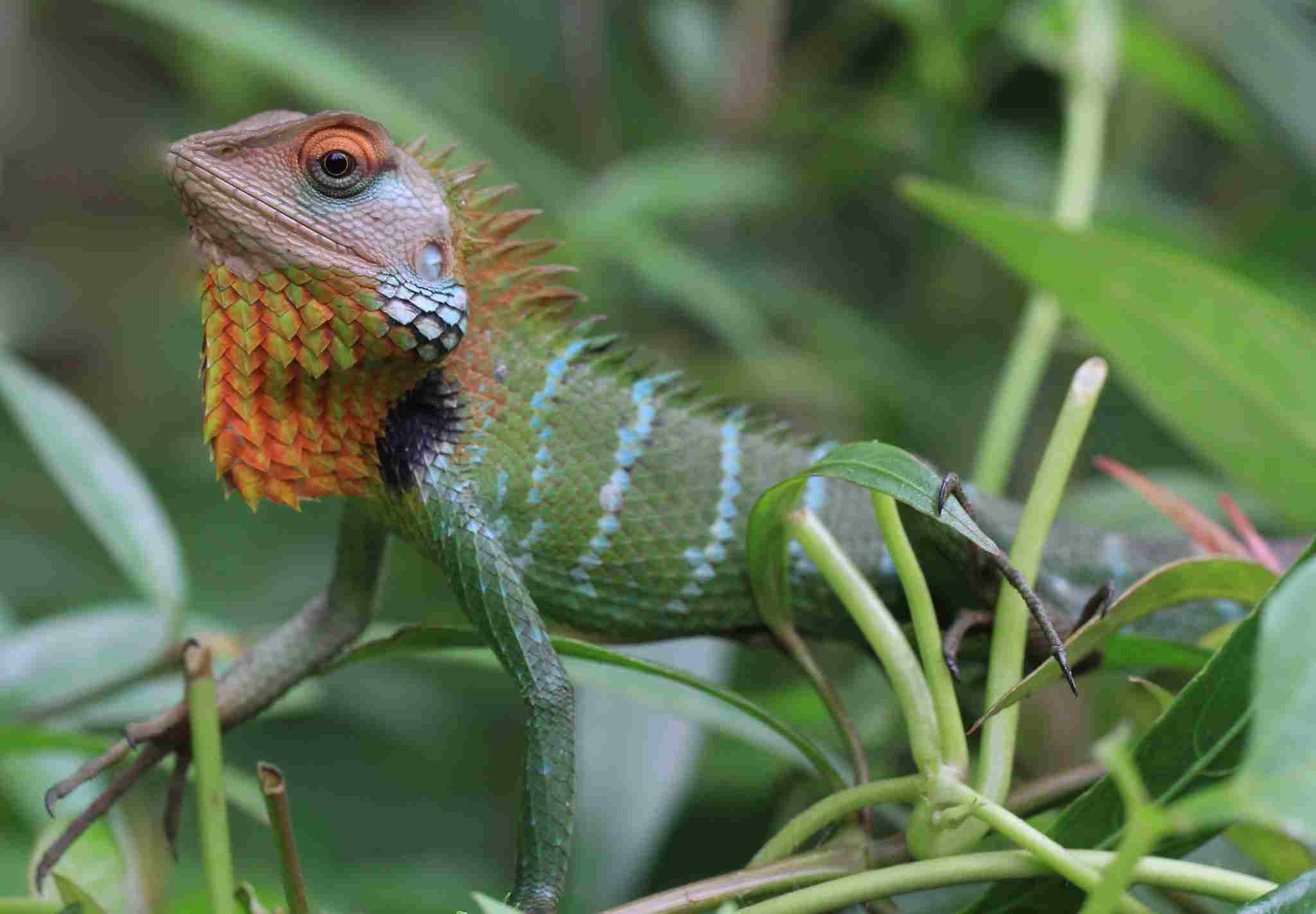
10). Do Birds Eat Lizards?
Yes, various birds including raptors and predatory birds do eat lizards. Birds such as hawks, eagles, and owls are known to prey on lizards as part of their diet. These birds have sharp talons and beaks that allow them to catch and consume lizards with ease. Lizards are a source of food for these birds, providing them with essential nutrients and energy.
The ability of birds to fly gives them an advantage in hunting lizards, as they can spot them from above and swoop down to catch them.
